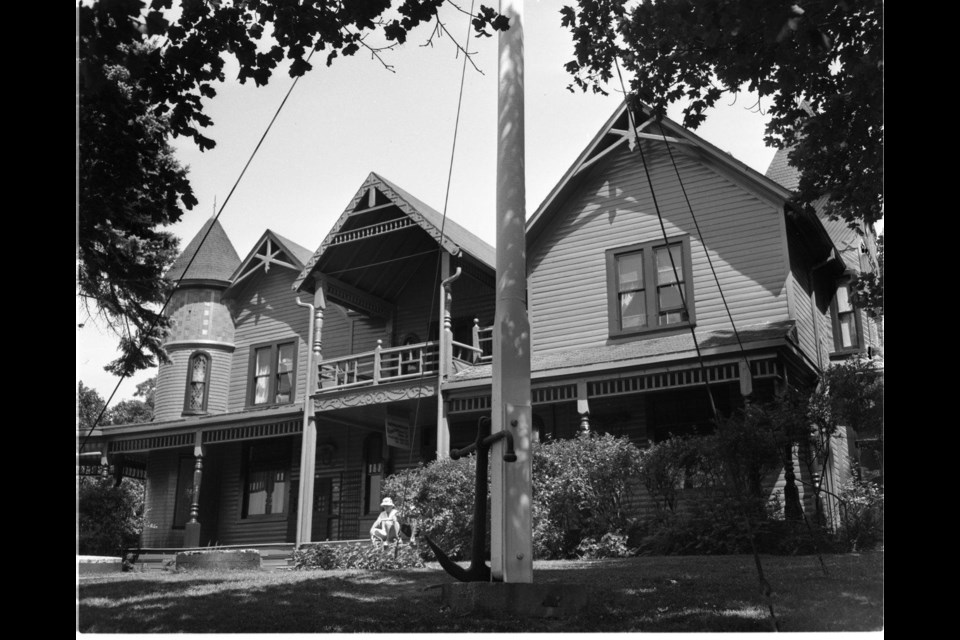A collection of over a million artifacts lives at the Huronia Museum and Huron Ouendat Village in Midland.
Like the items were when they were found, what’s on display really only scratches the surface.
In the 74 years since the museum opened its doors in 1947, the curators, directors and staff have devoted their time to preserving the history of North Simcoe.
That includes the history of the museum itself, and where it was first installed at Playfair House.
“It started with a group of men that collected things that would be of interest to tell the story of Huronia,” explains Nahanni Born, Executive Director at Huronia Museum and Huron Ouendat Village.
The collection as it stands today contains pieces from the Indigenous people of this land in pre-contact times with some pieces dating back 12,000 years.
For Born, the First Nations Gallery at the museum is a point of pride, because it was created with the involvement of the local Indigenous community to ensure there was accurate cultural representation and ownership.
She speaks highly of the museum’s collection of Indigenous artifacts.
The collection “probably tells one of the best and most diverse stories of Indigenous history,” Born says. “We have so much in our collection that tells the story of two nations. It tells a pre-contact story up to present day.”
The Huron Ouendat Village that you see when you come to the top of the hill from the King Street entrance of Little Lake Park, while an excellent teaching tool, was not originally established with the involvement of the Indigenous community.
The village was built by the Men’s Club from the YMCA in the 1950s as a fundraiser.
While it is not recreated on an archeological site, it is based on digs done by Wilfrid Jury, a prominent archaeologist whose digs uncovered pre-contact Indigenous sites in Ontario.
The museum took over the recreated Ouendat village in 1981 as an educational component. What stands today is not the same village that was built in the 1950s. A fire ravaged the village in 2007, and destroyed a good portion of it.
According to curator Genevieve Carter, the fire destroyed a good section of the palisade, a longhouse, the entrance to the village, which housed a small introductory museum, a building where education programs and camp were held, and another small building which housed outsized artifacts. All of the outsized artifacts were damaged, and anything not made of metal was destroyed.
“We were able to rebuild it, but never to the same level,” says Born.
Thankfully, the robust collection of pre-contact items was safely contained in the museum itself alongside pieces from a Women’s Institute of Ontario, which helped women access education, located in Saurin from 1947-2009, and “wireless communication” in its earliest form that helped ferry ships to safety in Georgian Bay.
“You can’t tell the story of the communities of North Simcoe without including Georgian Bay and the waterways that helped shape this community socially, economically and politically,” says Born.
In the Gallery of Historic Huronia, the museum displays pieces by four members of the Group of Seven, which constitutes one of the largest Group of Seven collections north of the McMichael Canadian Art Collection.
“We joke that Frank Johnston packed up his case and easel and went down five feet on the Wye River, and started another piece,” laughs Born.
Of all the artifacts the museum holds, those that tell a story and offer people the chance to connect personally to the history are the ones that make it all relevant.
“It’s one of the principles of interpretation is to make everything relevant,” says Born.
There is a piece of children’s pottery that stands out for Born.
It’s hard to recover archeologically, and it tells a story. You can see how the child who created the piece was trying to emulate their mother’s style, explains Born.
Often in history, “we seem to forget the individual,” says Born, “it’s human. Everybody had their own individual experience.”
Born invites one and all to come to the museum and find what they love.
“Take away a feeling of ownership. This is your story. This is your culture. This is your stuff,” says Born. “We just keep it safe.”
The Huronia Museum and Huron Ouendat Village is located at 549 Little Lake Park in Midland and visitor bubbles start at 9 a.m. and run until 3 p.m. daily. If visitors come with somebody from Midland, their admission is free while Tay Township residents can borrow a pass through their library.



